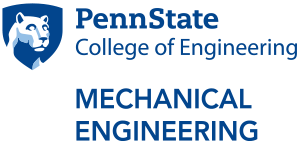Wakes in the Natural Environment
ABSTRACT: Environmental wakes are produced by flows past structures which are engineered (e.g., oceanic submersibles, aerial vehicles, wind turbines, urban structures) or in nature (hills, mountain ranges, islands, seamounts). These wakes impact drag on the incident flow as well as transport of material, pollutants and environmental constituents. We will illustrate wake flow physics with a few examples studied using high-resolution simulation. The wake of a blunt object such as a disk will be contrasted with a streamlined object such as a prolate spheroid with respect to mean velocity, turbulence levels, flow instabilities and coherent structures. We will discuss both a constant density fluid and a density-stratified fluid where buoyancy inevitably alters the wake of the body. We will also present an example from nature, an oceanic current past a submerged hill, where we find synchronization of wake vortices with subharmonics of the oscillating tide and also states of high drag.
BIOGRAPHY: Sutanu Sarkar received his B. Tech. from IIT Bombay, M. S. from Ohio State University and Ph. D. from Cornell University. After 4 years as a staff scientist at ICASE, NASA Langley Research Center, he joined UCSD where he currently holds the Blasker Chair of Environmental Engineering, is a Distinguished Professor in the department of Mechanical & Aerospace Engineering (MAE), and is an affiliate professor at the Scripps Institution of Oceanography. He was Chair of MAE from 2009-2014. He has broad interests in the simulation and modeling of turbulent flows. He has worked in problems concerning the environment, energy, aerospace and propulsion. His current research interests are turbulence and mixing in the ocean and atmosphere, wakes and boundary layers of engineered structures in the natural environment, and renewable energy. He has received a NASA group achievement award (1994), the Bessel Award from the Humboldt Foundation (2001), and was elected Fellow, American Physical Society (2006), Associate Fellow, AIAA (2009) and Fellow, ASME (2010). He is an associate editor of JFM.
Media Contact: Serena Sidwell


